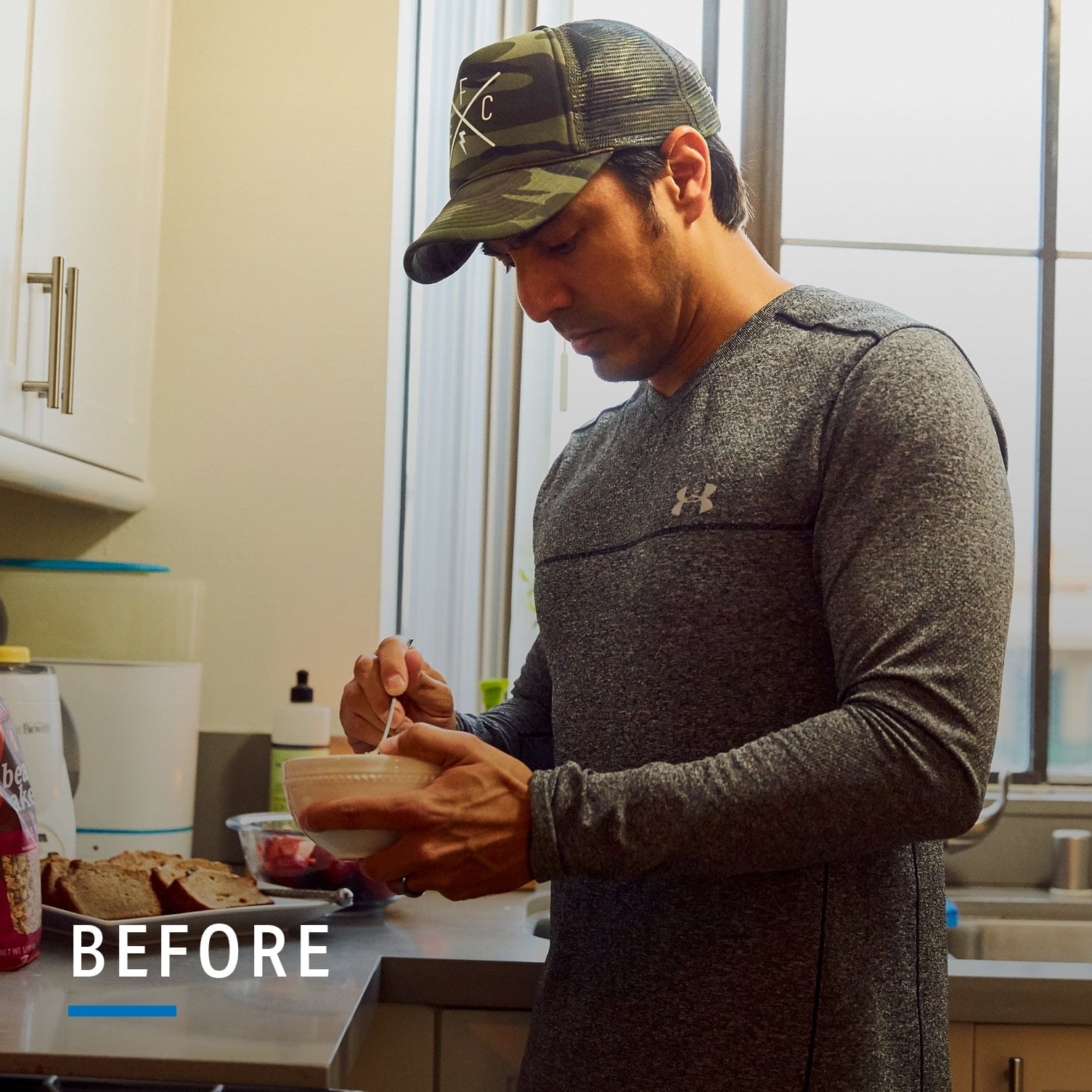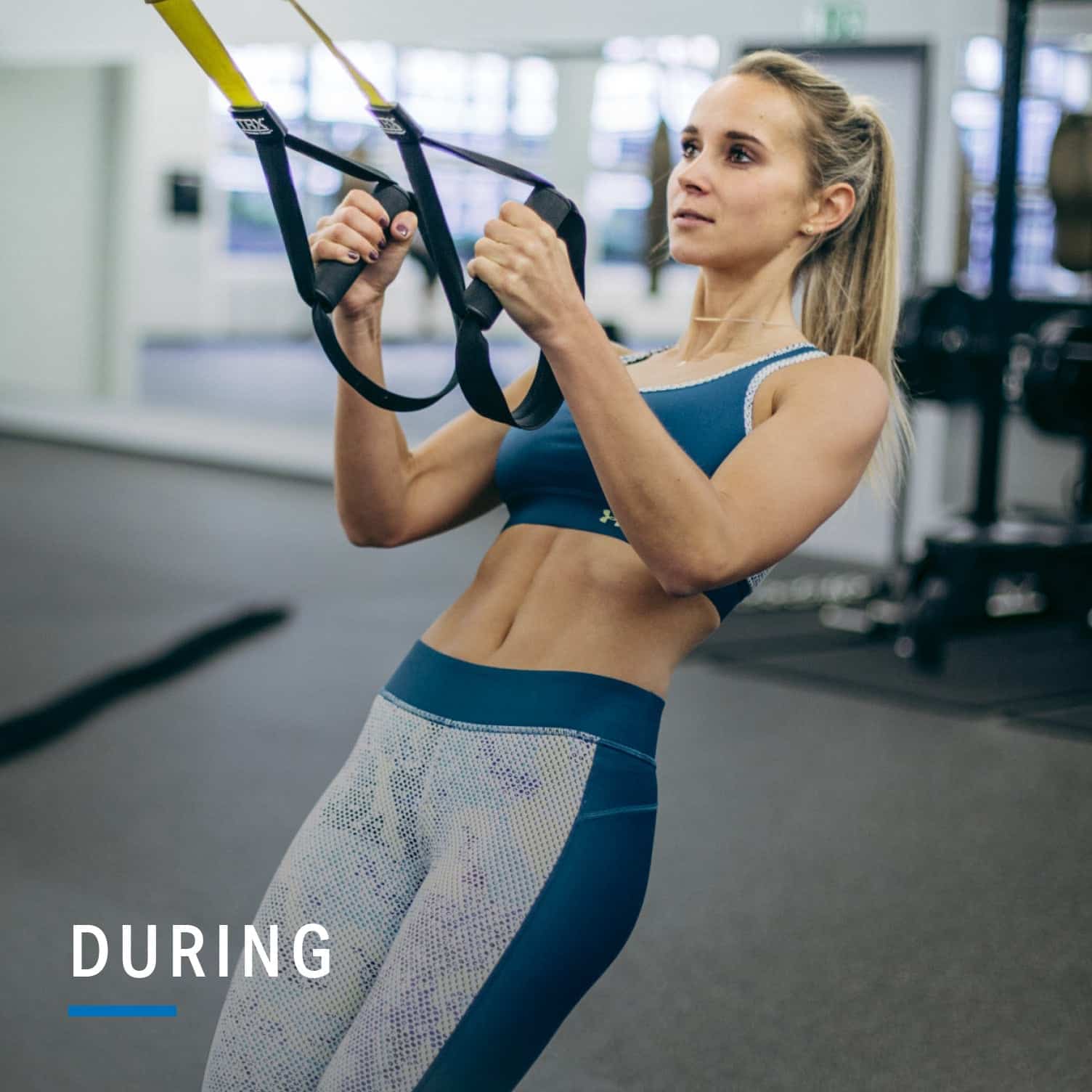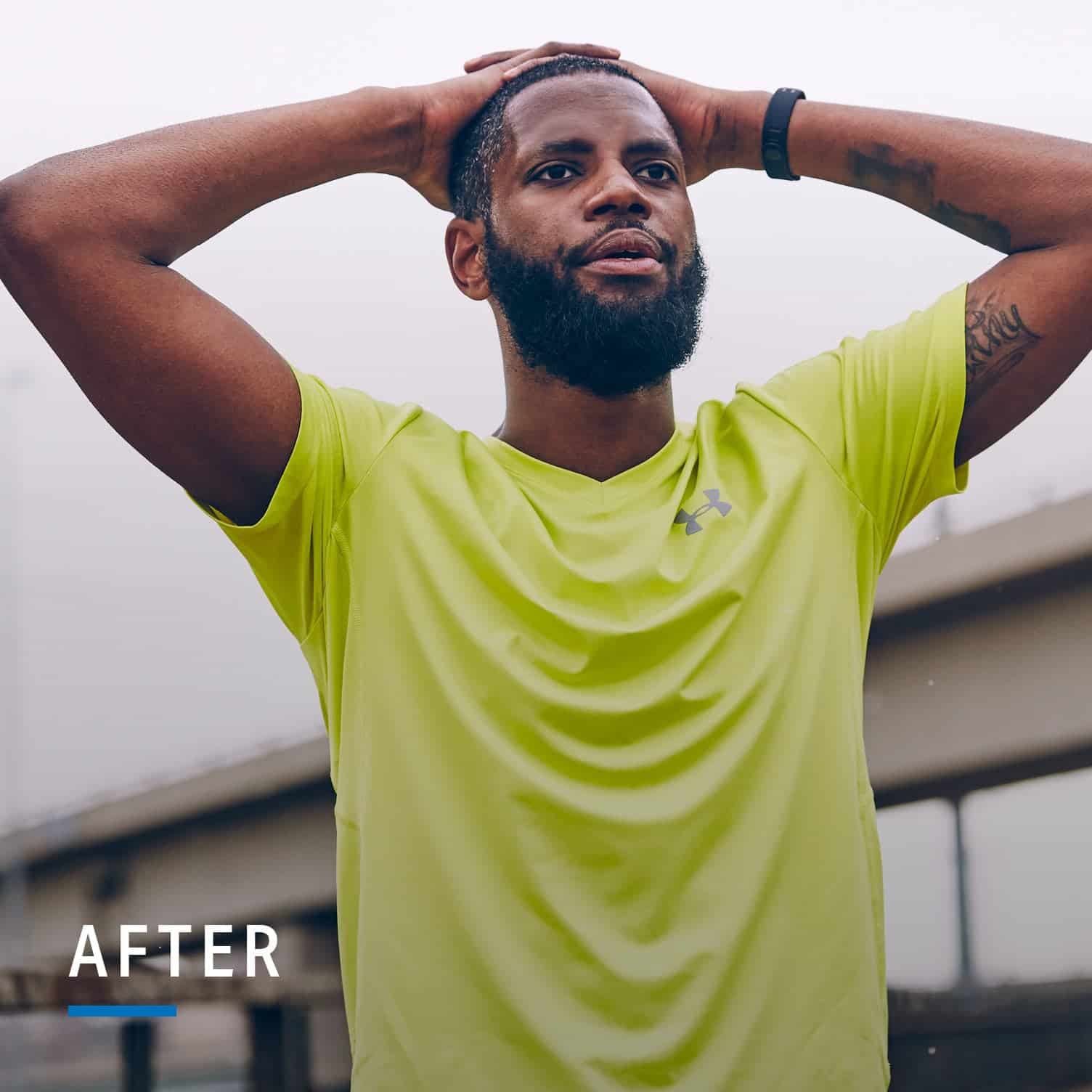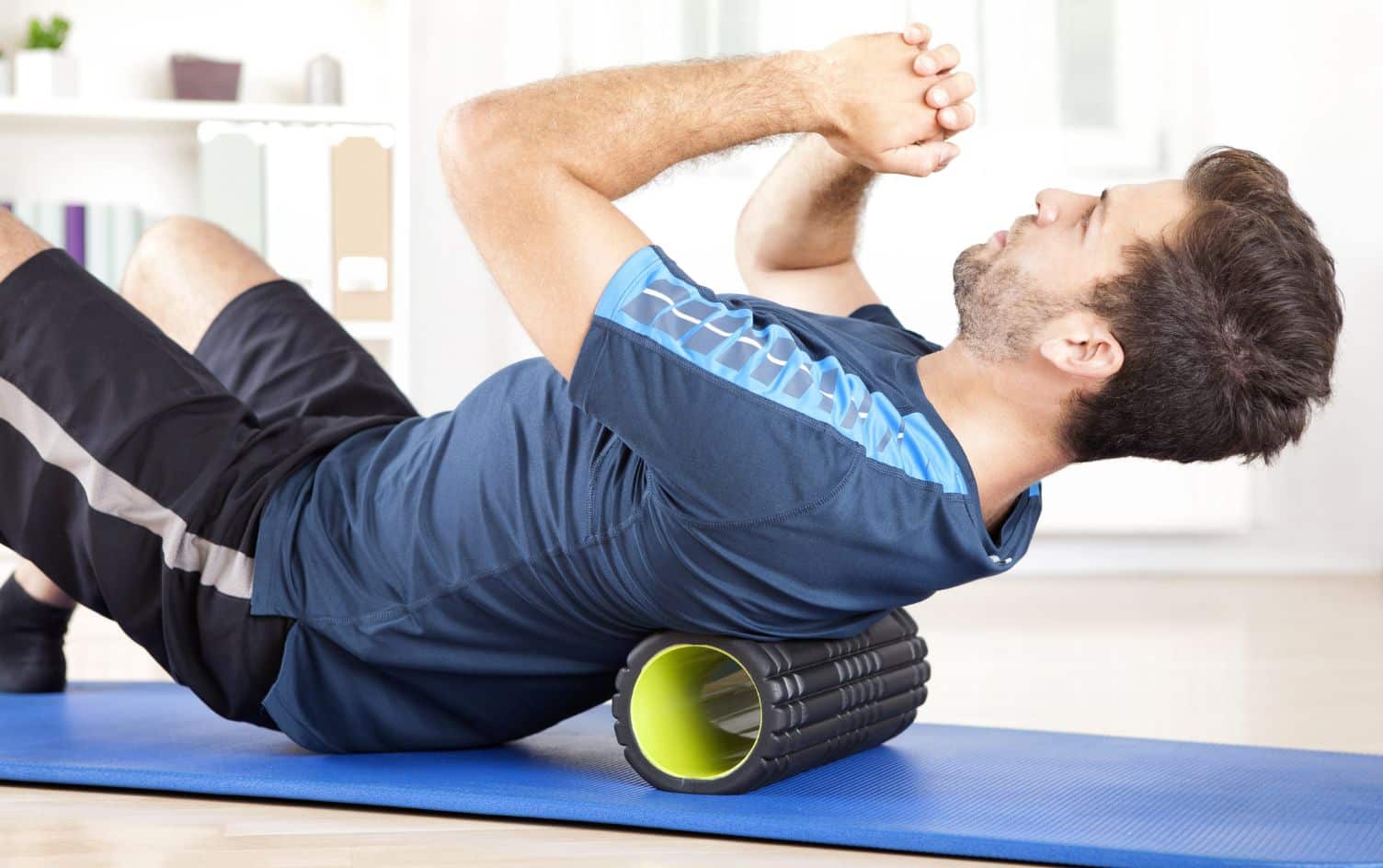If you’re after workout results, what you do in the gym definitely matters, but what you do before and after your time in the gym is key, too. While actually getting to the gym is the biggest hurdle, once you’ve got that mastered, there are many ways you can maximize the results you’re seeing from your workouts.
Here’s what top trainers recommend doing before, during and after your workouts to see results ASAP.

GET ADEQUATE SLEEP
“You wouldn’t attempt to drive 100 miles on an empty tank of gas, would you,” asks Ali Haynes, owner and master trainer at The Barre Code Oak Park. “When you sleep, your body goes into recovery mode. All systems of the body benefit from adequate sleep, including your muscular system. Do you want to feel energized doing a burpee? Get seven-plus hours of sleep a night.” Giving your body a chance to recover means you can get back at it — with your full attention and energy — sooner.
FUEL PROPERLY
What you eat — and when — matters. “It’s important to eat 1–2 hours before your workout because it will fuel your workout,” explains Lauren Manganiello, a registered dietitian nutritionist in NYC. “Your body needs sugar (aka carbs) for energy during workouts. When you work out on an empty stomach, your body will still be looking for energy, and ultimately it will find it by burning our muscle mass.” Instead of burning muscle mass, you want to build it, even if your goal is weight loss. “So consuming a pre-workout snack can help give you energy for a great workout while also helping to preserve and build muscle.”
PERFORM DYNAMIC WARMUP
It’s crucial to prep your body for the workout that lies ahead so you can perform to your max. “A dynamic warmup will increase core temperature, facilitate blood flow to your muscles, reduce risk of injury and prepare your body to move well,” notes Kari Woodall, trainer and owner of BLAZE. “A good dynamic warmup changes direction and height and uses the whole body. It doesn’t have to be complicated to be effective, either. A simple dynamic warmup might consist of skipping, jogging forward and backward, carioca sideways, bear crawl forward and backward, world’s greatest stretch and short, high-tension planks to fire up your core. You want to break a light sweat, so 5–7 minutes may be all you need.”

GET INTO THE ZONE
“Make sure you have a set of headphones and an energy-filled playlist,” recommends Michael Piercy,certified strength and conditioning specialist and owner and founder of The LAB. “These can be the key to cutting off the hustle and bustle of the outside world and helping push you through your best workouts.”
On a similar note: “Can you imagine an Olympic athlete texting while practicing? Or scrolling through Instagram while stretching? No!” says Jess Glazer, a certified personal trainer and founder of FITtrips. “If you’re committing to an hour of self-love at the gym, then give yourself the full hour. The emails can wait, trust me.” And if you want to listen to music on your phone, Glazer suggests putting it in airplane mode. “That way, you won’t be notified of distractions.”
BREATHE
“Breathe in sync with your workout,” suggests Ayesha Akhtar, a personal trainer and running ambassador for Team Every Mother Counts. “This seems obvious (hello, yogis) but really stop to watch your breathing pattern the next time you’re box jumping, spinning or deadlifting. Are you aware of your breathing patterns? For example, during a deadlift, be sure to inhale when you set up, and exhale when it’s time to work. When I run, I like to inhale two counts through my nose, exhale two counts through my nose. Small changes to your breathing not only make you more efficient, but also build new neuronal networks in your brain making your mind-body connection more impactful.”
USE THE MIND/MUSCLE CONNECTION
“Studies show that there is a massive connection between our minds and our bodies,” Glazer points out. “When you’re working out, really think about the muscle that you’re working. Focus your mind on the actual movement of pushing, pulling, lifting or lowering.” You can even use visualization techniques to help yourself conquer more challenging exercises or weight loads. “Imagine the success, completion and growth of your movement,” Glazer suggests.
CHECK YOUR EGO AT THE DOOR
If you want to see real growth and results, you’ll need to let go of your ego each time you walk into the gym. “Think about this for a second,” Glazer says. “Have you ever seen the big guy at the gym who is lifting a ridiculously heavy stack of weights, but he’s jerking around with terrible form and looks like he’s one more rep away from leaving on a stretcher? Yup, we all have! He’s lifting with his ego, not his mind or muscle.
“Exercise, done correctly, should be humbling. Ask any professional athlete or fitness expert if it’s easy all the time. I promise you they would all answer ‘no.’ It takes getting out of your comfort zone, lifting one extra rep, adding a tiny bit more weight and even failing in order to see progress and growth. Form, function and technique are the foundations to safe and effective exercise. Master the foundation, and then you can worry about building on top of that.” Perfecting the basics only makes you stronger and fitter in the long run.

STRETCH AND COOL DOWN
“Take a few minutes to stretch, unwind and breathe,” Woodall says. “You walk around in a stimulated environment all day. Your workout adds to that, so the amount of time you take to relax your body and mind will help maximize your training results in the long run. You’ll avoid burnout and injury if you lengthen your muscles, move your joints and work in an unloaded environment after each workout. Then, be sure to take a few minutes to lie down and breathe, because it’s most likely the only time during your day you’ll do this for yourself.”
RECORD YOUR PROGRESS
After that, jot down what you did before you move on to the next part of your day. What were the exercises, reps, weights and distances you completed? “It’s also a great idea to bullet some notes down as reminders; maybe something you struggled with, how you felt or if there was a pain during an exercise,” Glazer says. “Keeping a log helps you stay on track, see what you’re doing next, where you came from and if you’re pushing too hard or not enough. Not to mention, it’s a wonderful tool to look back on when you need a little motivation! Journaling your fitness journey is a great way to track progress.”
GRAB A POST-WORKOUT FUEL
“Don’t skip this, even if you’re not super hungry or [you’re] rushing to get to work,” Glazer says. “If you don’t fuel your body after a workout, well, you’re starving it and decreasing your results. There is a 30–45 minute window after you work out when your body is looking for carbohydrates and protein to replenish and restore what you’ve used up. If you don’t eat after you workout, chances are you’ll feel starving in a short time, which means you’ll most likely grab whatever is easiest, fastest and typically sweet.”
You may also want to consider eating foods with potassium post-workout. “It’s a key mineral for refeeding muscular energy,” Glazer explains. “Bananas are a great source of potassium, as well as a simple carbohydrate. Eat them plain, with nut butter or throw them into a post workout shake.”




